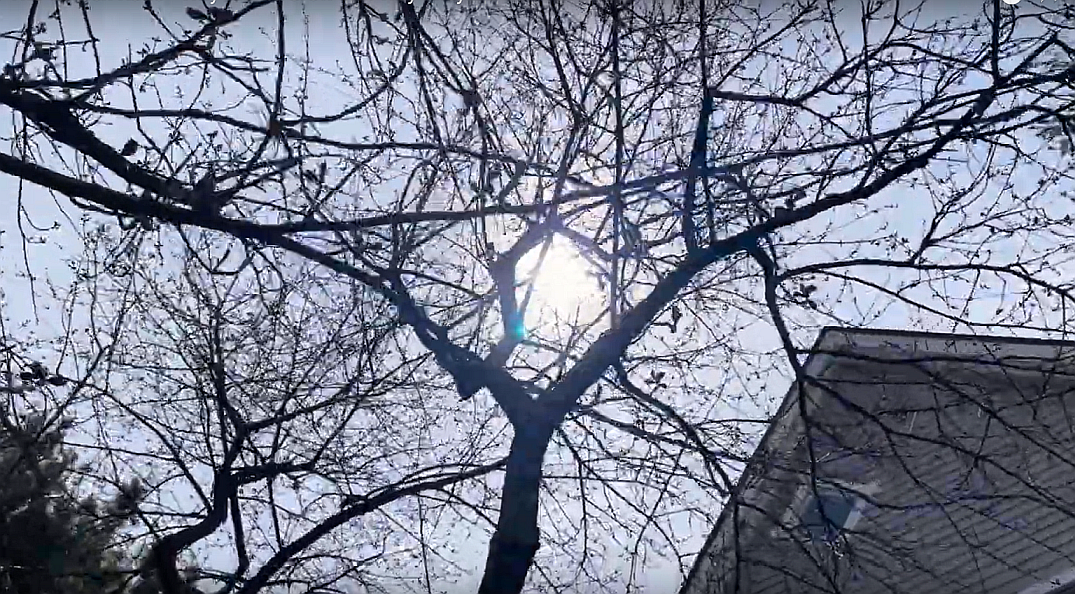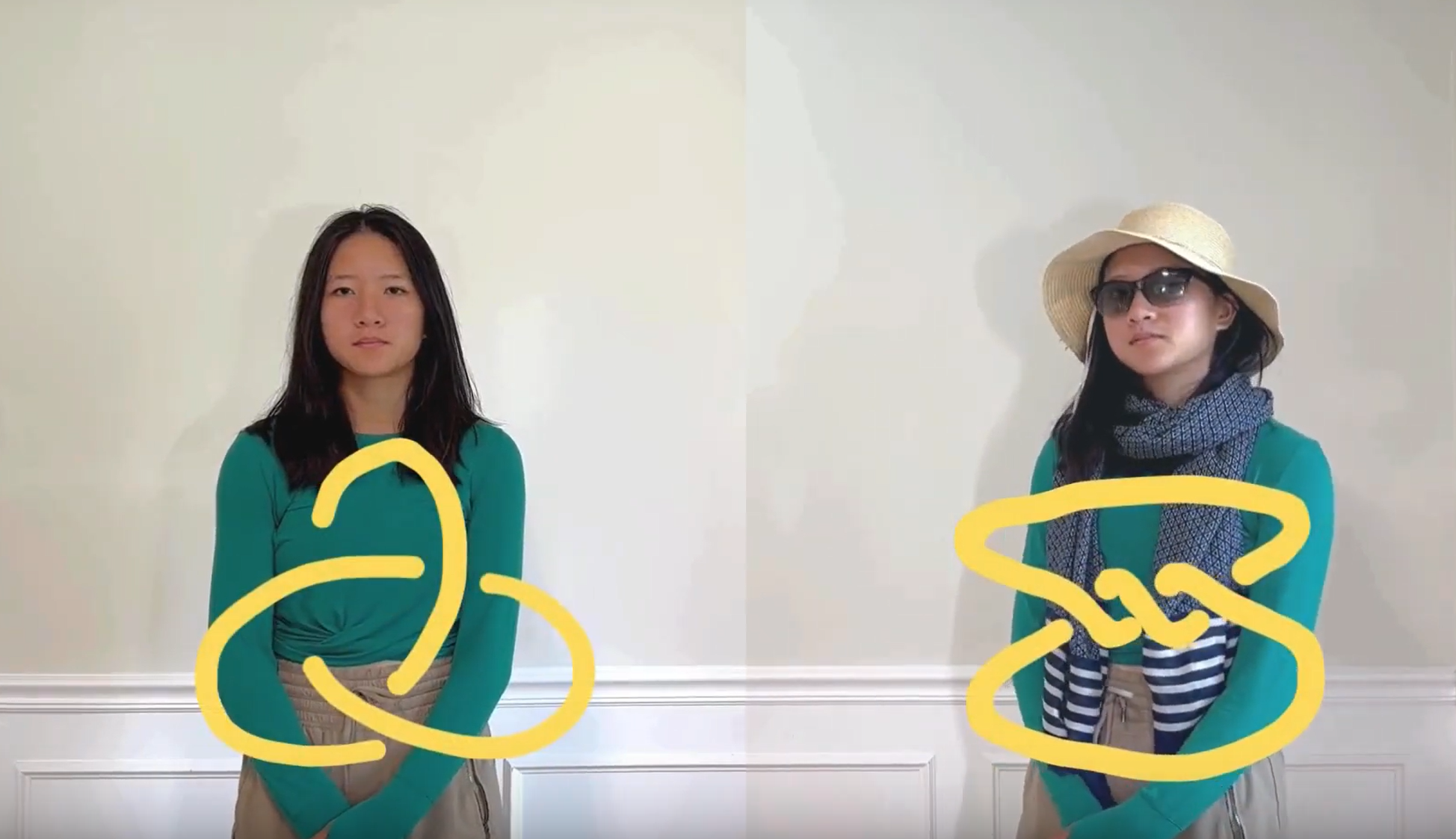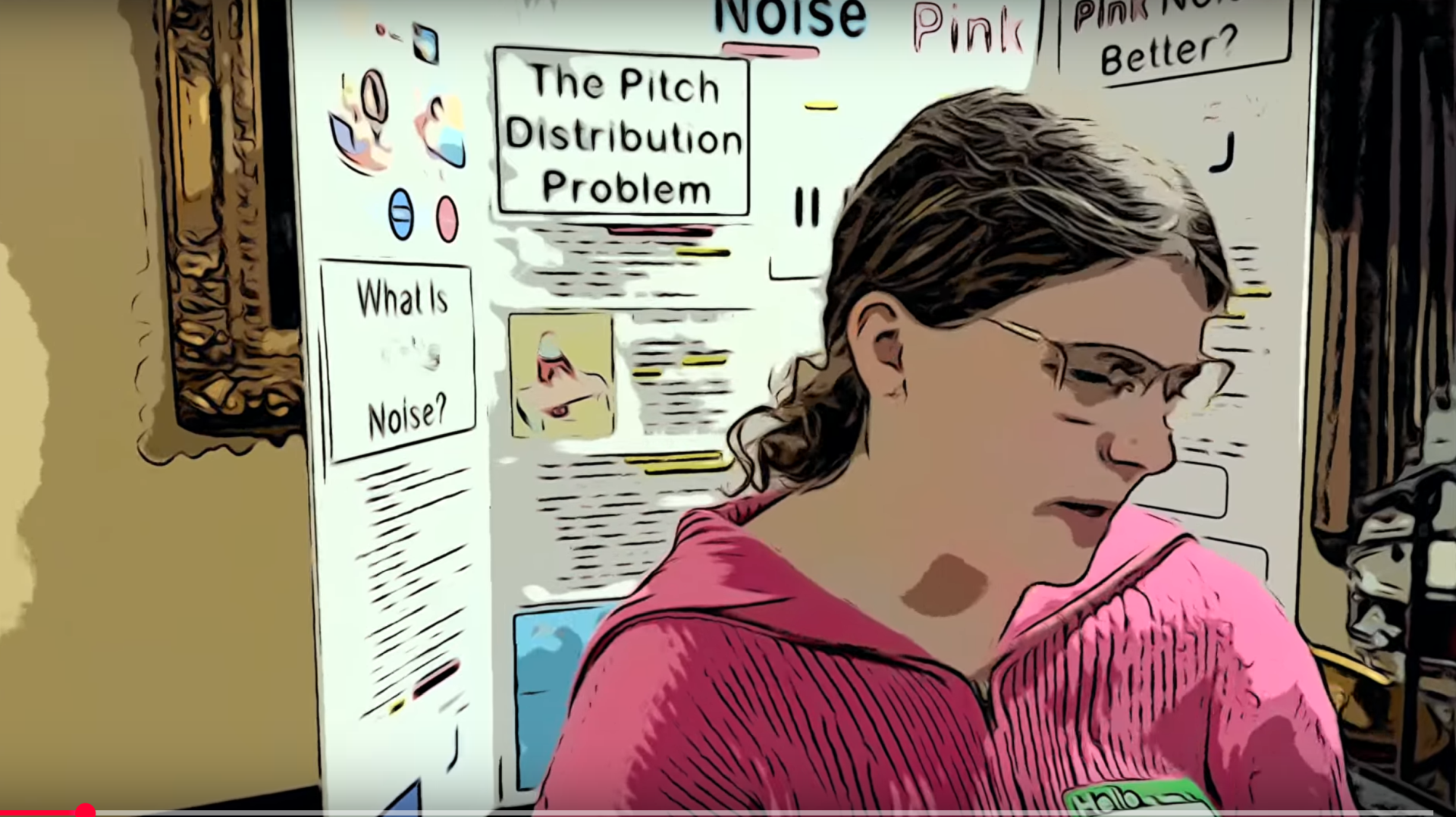Math Monday: DIY Tensegrity
by Glen Whitney
[sharethis]
In honor of a recent visit to Kenneth Snelson‘s workshop, and as a continued tribute to Math Craft, which has a nice gallery of tensegrity projects, here’s a detailed, step-by-step illustration of how to make a tensegrity structure that you may not find in a lot of other places — a frustum of a pentagonal pyramid: Tensegrity structures are almost magical-seeming combinations of compression elements (in this case, coffee stirrers) and tension elements (in this case, rubber bands) which hold themselves stably in well-defined three-dimensional structures, just by the balance of forces. This type of structure was pioneered by Kenneth Snelson, and since his discovery, a lot of information has collected out there about them — so enjoy exploring! Here’s how to get started:
Tensegrity structures are almost magical-seeming combinations of compression elements (in this case, coffee stirrers) and tension elements (in this case, rubber bands) which hold themselves stably in well-defined three-dimensional structures, just by the balance of forces. This type of structure was pioneered by Kenneth Snelson, and since his discovery, a lot of information has collected out there about them — so enjoy exploring! Here’s how to get started:
First, we make our compression members from pairs of coffee stirrers with their flat sides against each other. Wrap a piece of tape around both sticks, precisely one thumb’s width from each end:


For this project, we need five taped pairs. Arrange them in a pentagon, each stick under its clockwise neighbor and over its counterclockwise neighbor. The goal is to have the high end of each stick be approxmately at the midpoint of the two nearest low ends of sticks.

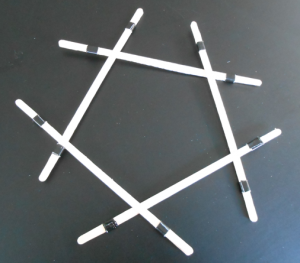
Now we add the tension elements by slipping a rubber band into the space between the two coffee stirrers at one end of a taped pair, like so:

For this model, start with one rubber band slipped into each of the low ends, and then into the next counterclockwise upper end, leaving about a quarter of the rubber band between the two adjacent sticks:

Then, in turn, slip the free end of each of these rubber bands into the next counterclockwise low end, gradually wrapping the sticks into a star, as in the next series of photos:


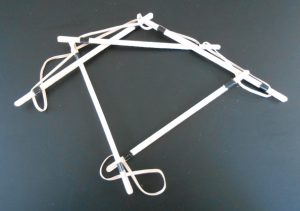


You need just one more rubber band — slipped into all five of the upper stick ends: Now you’re almost done: just tweak and pull the rubber bands through the slots at the end of the sticks, to get everything nice and symmetric as in the opening photo above. Amazingly, the five sticks will rise out of the plane, to create the pyramidal three-dimensional structure, tugged into place by the opposing forces of the rubber bands, each trying to minimize its tension.
Now you’re almost done: just tweak and pull the rubber bands through the slots at the end of the sticks, to get everything nice and symmetric as in the opening photo above. Amazingly, the five sticks will rise out of the plane, to create the pyramidal three-dimensional structure, tugged into place by the opposing forces of the rubber bands, each trying to minimize its tension.
Of course, these same basic materials and methods can be used to create many other tensegrity structures, such as this classic six-strut not-quite-regular icosahedron: As always, pics of anything incredible you create to mondays@momath.org. Enjoy exploring the wonderful world of tensegrity!
As always, pics of anything incredible you create to mondays@momath.org. Enjoy exploring the wonderful world of tensegrity!
This article first appeared on Make: Online, April 29, 2013.






